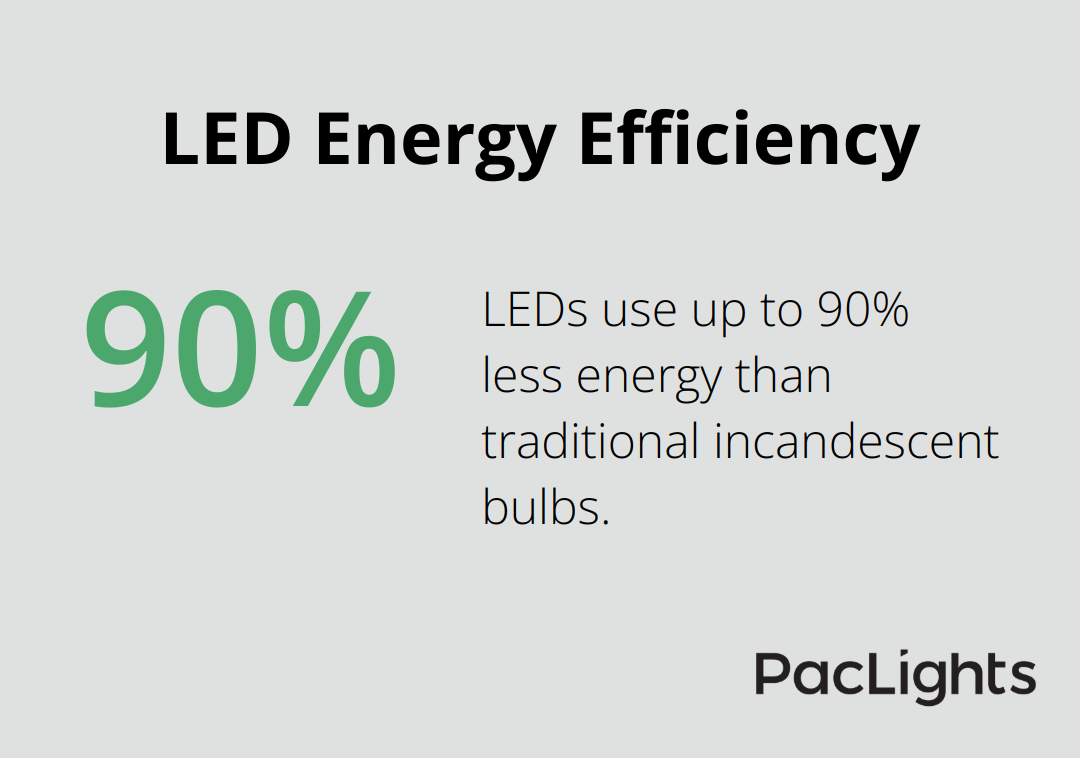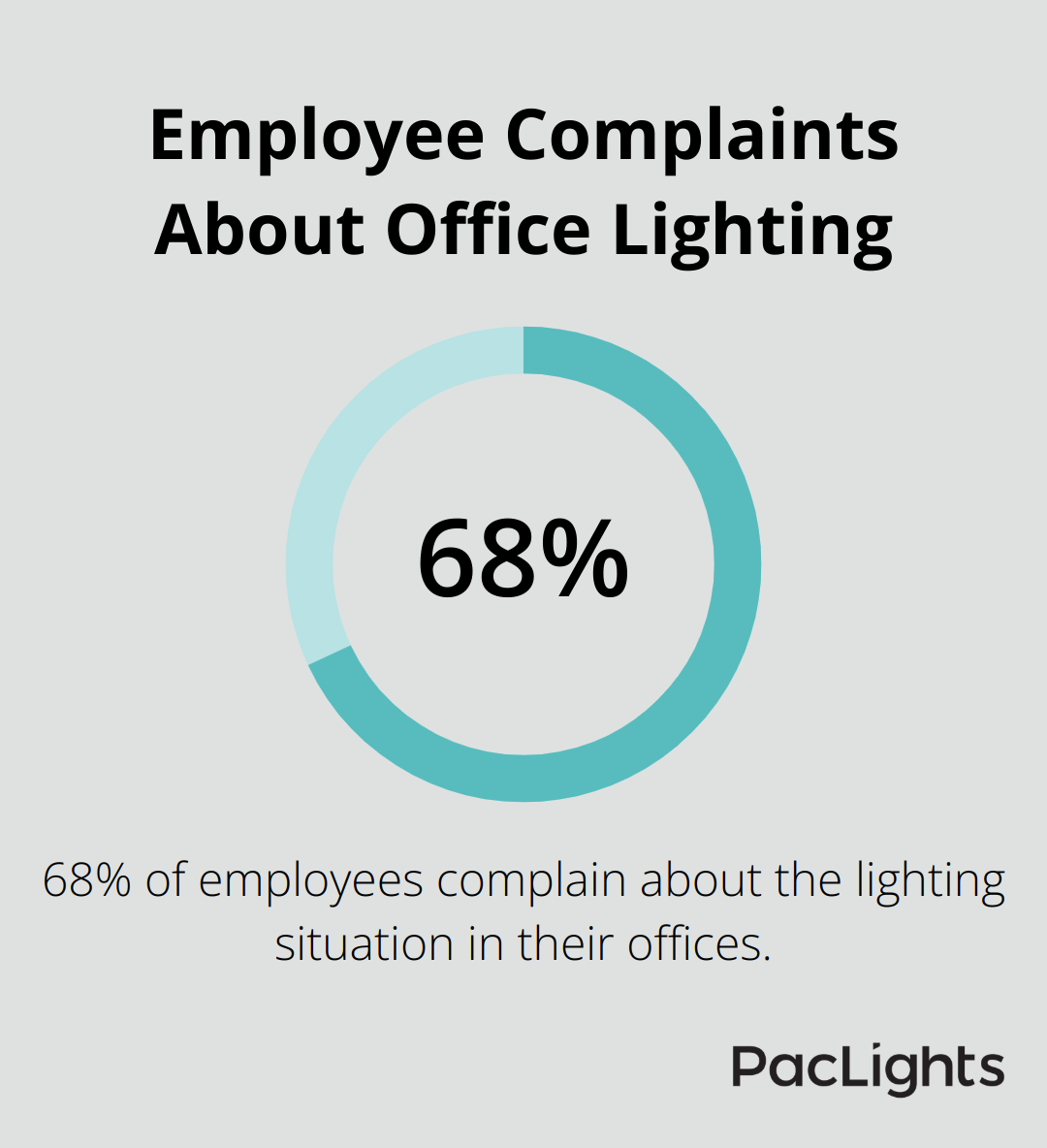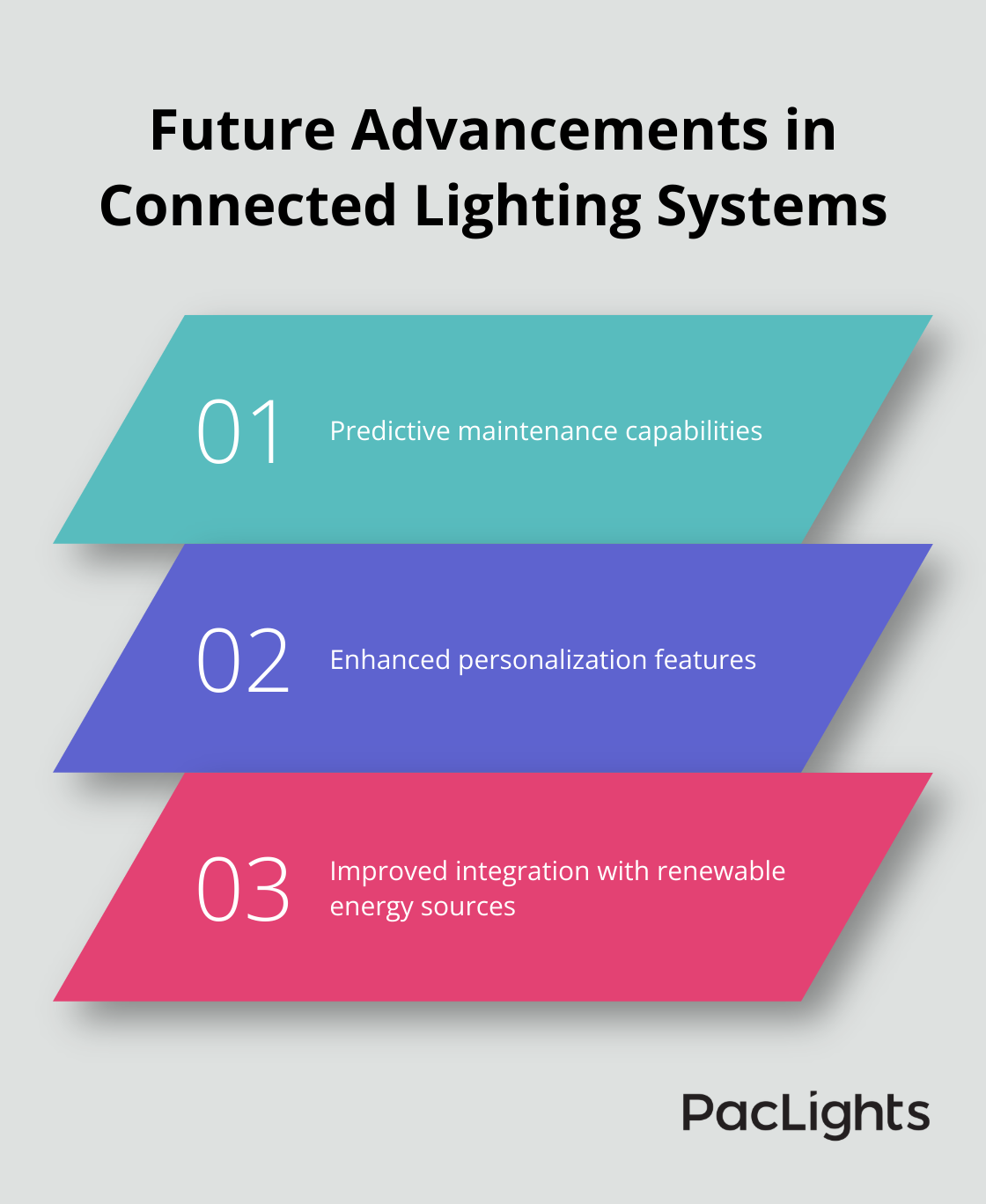The commercial lighting industry is evolving at a rapid pace, with new technologies and trends reshaping the way we illuminate our spaces. From energy-efficient solutions to human-centric designs, the landscape is changing dramatically.
At PacLights, we’re excited to explore these innovations and their impact on businesses and individuals alike. In this post, we’ll examine the latest developments that are transforming commercial lighting and discuss how they’re creating brighter, more sustainable futures for us all.
How Are LED Advancements Revolutionizing Commercial Lighting?
The LED Revolution: Beyond Energy Savings
The commercial lighting industry is experiencing a profound transformation, propelled by cutting-edge LED technology and an increased focus on sustainability. These innovations are not only changing how we illuminate spaces but are also reshaping energy consumption and environmental responsibility in the commercial sector.
LED technology has evolved significantly since its introduction. Modern LEDs offer unparalleled energy efficiency and versatility. The U.S. Department of Energy reports that LEDs use up to 90% less energy and last up to 25 times longer than traditional incandescent bulbs. This translates to substantial cost reductions for businesses, with some companies reporting up to 50% savings on their lighting-related energy bills after transitioning to LED systems.

The advantages of contemporary LEDs extend far beyond energy conservation. The latest LED fixtures provide unprecedented control over light quality, color temperature, and distribution. This level of control enables businesses to create customized lighting environments that boost productivity, enhance customer experiences, and support employee well-being.
Smart Lighting: The Future of Energy Management
Smart lighting systems are elevating energy efficiency to new heights. These systems utilize a combination of sensors, networked controls, and data analytics to optimize lighting usage in real-time. Occupancy sensors automatically adjust or switch off lights in empty areas, while daylight harvesting systems modify artificial lighting based on available natural light.
A study conducted by the Lawrence Berkeley National Laboratory revealed that implementing smart lighting controls can result in energy savings of up to 60% in certain commercial buildings. Furthermore, these systems provide valuable insights into energy consumption patterns, allowing facility managers to make data-driven decisions about lighting usage and maintenance.
Sustainable Manufacturing: Illuminating a Greener Path
The drive for sustainability in commercial lighting extends beyond energy efficiency. Manufacturers are increasingly adopting eco-friendly practices in their production processes. This includes the use of recycled materials, waste reduction, and the implementation of circular economy principles.
Some leading lighting companies now offer take-back programs for old fixtures, ensuring proper recycling or repurposing of materials. Others focus on designing products with extended lifespans and improved repairability, reducing the need for frequent replacements.
The impact of these sustainable practices is substantial. A report by McKinsey & Company indicates that the lighting industry could reduce its carbon footprint by up to 40% by 2030 through improved manufacturing processes and product design.
The Role of Advanced Controls in Energy Optimization
Advanced lighting controls play a crucial role in maximizing energy savings and operational efficiency. These systems (which include networked lighting controls) allow for precise management of lighting across large commercial spaces. They can integrate with building management systems, respond to occupancy patterns, and adjust to changing environmental conditions.
The ability to fine-tune lighting based on real-time data not only reduces energy waste but also enhances the overall lighting experience for occupants. For instance, these systems can automatically adjust color temperature throughout the day to support natural circadian rhythms, potentially improving employee well-being and productivity.
As the commercial lighting industry continues to evolve, businesses that embrace these technological advancements and sustainability initiatives will reap significant benefits. From reduced energy costs to improved operational efficiency and enhanced environmental credentials, the future of commercial lighting promises to be brighter and more sustainable than ever before.
How Can Human-Centric Lighting Boost Workplace Performance?
Aligning Light with Natural Rhythms
Human-centric lighting designs replicate the natural progression of daylight, adjusting color temperature and intensity throughout the day. This synchronization with our internal body clocks can significantly affect alertness, mood, and cognitive function.
A 2017 study published in Lighting Research & Technology found that exposure to dynamic lighting mimicking natural daylight improved sleep quality and cognitive performance in office workers.
Customization for Optimal Performance
Modern lighting systems offer unprecedented levels of customization, allowing businesses to tailor their lighting environments to specific tasks and individual preferences. This flexibility proves crucial in multi-use spaces where different activities may require varying light conditions.
For instance, in a creative agency, designers might benefit from cooler, brighter light to enhance focus during detailed work, while a warmer, dimmer setting could foster creativity during brainstorming sessions. The ability to adjust color temperature (between 2700K and 6500K) can accommodate these diverse needs within a single space.
Enhancing Well-being Through Illumination
The impact of lighting on employee well-being extends beyond productivity. Proper lighting can reduce eye strain, headaches, and fatigue, leading to improved job satisfaction and reduced absenteeism.
A landmark study by the American Society of Interior Design revealed that 68% of employees complain about the lighting situation in their offices.

Companies can create more comfortable work environments that support long-term employee health and satisfaction by addressing these concerns through human-centric lighting solutions.
Implementing Human-Centric Lighting Solutions
The implementation of human-centric lighting requires more than just installing new fixtures; it demands a holistic approach that considers the specific needs of the space and its occupants. Businesses should conduct thorough assessments of their lighting needs, considering factors such as the nature of work performed, the layout of the space, and the typical schedules of employees.
As the commercial lighting industry continues to evolve, human-centric solutions become increasingly sophisticated and accessible. These solutions prioritize the biological and emotional needs of occupants, creating environments that not only look good but actively contribute to the health, happiness, and productivity of the workforce.
The next frontier in commercial lighting lies in the integration of IoT and connected lighting systems, which promise to take human-centric lighting to new heights of personalization and efficiency.
How IoT Transforms Commercial Lighting
The integration of Internet of Things (IoT) technology with commercial lighting systems revolutionizes how businesses manage their illumination. This convergence creates intelligent, responsive environments that optimize energy use, enhance user comfort, and provide valuable insights for facility managers.
Wireless Control Systems: The New Standard
Wireless control systems rapidly become the norm in commercial lighting. These systems allow unprecedented flexibility and scalability, enabling businesses to adjust lighting schemes without extensive rewiring. A report by MarketsandMarkets predicts the global smart lighting market will grow from $13.4 billion in 2020 to $30.6 billion by 2025, with wireless systems playing a significant role in this expansion.
One key advantage of wireless systems is their ability to integrate seamlessly with existing infrastructure. A retail chain can retrofit its stores with wireless-enabled LED fixtures and sensors, creating a network controlled and monitored from a central location. This simplifies management and allows rapid implementation of new lighting strategies across multiple locations.
Data-Driven Lighting Optimization
The true power of IoT in commercial lighting lies in its ability to collect and analyze data. Advanced sensors embedded in lighting fixtures gather information on occupancy patterns, ambient light levels, and energy consumption. This data is then processed to optimize lighting performance and energy efficiency.
A study by the U.S. Department of Energy found that advanced lighting controls can reduce energy consumption by up to 47% in office buildings. Through occupancy data analysis, businesses can identify underutilized spaces and adjust their lighting schedules accordingly. This saves energy and can inform decisions about space utilization and real estate management.
Seamless Integration with Building Systems
IoT-enabled lighting systems increasingly integrate with broader building management systems (BMS). This integration allows a holistic approach to building operations, where lighting works in concert with HVAC, security, and other systems to create more efficient and comfortable environments.
A practical example of this integration is seen in smart office buildings where lighting systems communicate with access control systems. When an employee enters the building, their personal lighting preferences automatically apply to their workspace, enhancing comfort and productivity. Similarly, when the last person leaves a floor, the system automatically adjusts lighting and temperature settings to conserve energy.
The Future of Connected Lighting
As IoT technology continues to evolve, we can expect even more sophisticated systems that not only illuminate spaces but actively contribute to the overall efficiency and effectiveness of commercial operations. These advancements will likely include:

Businesses that embrace these technologies will find themselves at the forefront of energy management and workplace optimization, paving the way for smarter, more efficient commercial spaces.
Final Thoughts
The commercial lighting industry continues to evolve rapidly, driven by technological advancements and a growing focus on sustainability. LED technology offers unparalleled energy efficiency and control over lighting quality, while smart lighting systems revolutionize energy management and provide valuable data insights. Human-centric lighting solutions recognize the profound impact of illumination on human well-being and productivity, gaining prominence in the industry.
PacLights stands at the forefront of these industry trends, offering a comprehensive range of energy-efficient lighting solutions designed for diverse commercial and industrial facilities. Our product lineup includes advanced LED fixtures for indoor and outdoor applications, with optional daylight and motion controls to optimize energy usage. We understand that the future of commercial lighting lies in intelligent, connected systems that contribute to overall operational efficiency.
The commercial lighting industry will likely see further advancements in LED technology, more sophisticated control systems, and an increased focus on sustainable manufacturing practices. The integration of artificial intelligence and machine learning into lighting systems will lead to more personalized and efficient lighting experiences. As businesses recognize the importance of quality lighting, demand for advanced solutions will grow, shaping smarter, more sustainable spaces for work and life.


Disclaimer: PacLights is not responsible for any actions taken based on the suggestions and information provided in this article, and readers should consult local building and electrical codes for proper guidance.